Rarely is a 3D printer equipped exactly as you’d like when it arrives. Half the fun of having one is improving it! While there are several aspects of the printer itself that you can improve on, one of the first decisions you’ll have to make is what type of filament to use.
Filament is the material that feeds into your FDM printer’s extruder assembly where it’s melted, then extruded through the nozzle to create prints, layer by layer. There are many different types of filament available and in a rainbow of colors. The most popular types include PLA, PETG, and ABS. While the filament you choose will depend on your specific needs, every spool of filament will benefit from having the right accessories on hand.
In this article, we’ve put together a list of the best accessories to help keep your filament dry, organized, and flowing smoothly. These items will help you get the best from your filament and, therefore, the best possible print.
Dryers
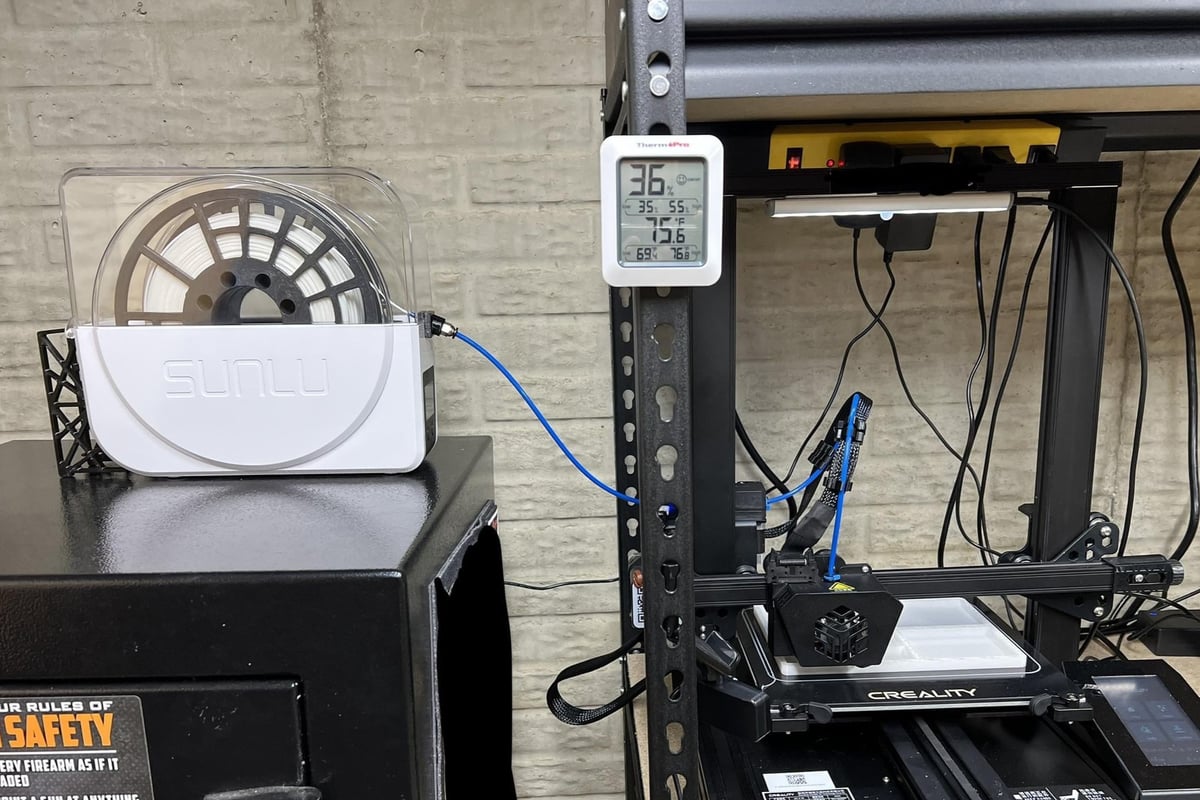
Many 3D printing plastics are hygroscopic, meaning that they naturally absorb moisture from the air. Because of this, simply leaving your filament out causes it to become moist, degrading the quality of prints made with the filament and leading to issues like bubbling, nozzle jams, and brittle prints. In addition to proper storage, the number one way to protect your filament from moisture is to use a filament dryer.
Filament dryers are containers that actively dry an inserted filament spool by heating it up to remove any moisture in the material. If you’re interested in purchasing a filament dryer, PrintDry Pro 3, Sovol SH01, and Sunlu FilaDryer S1 are both great options. If you want to take the cheaper and more DIY route, you can alternatively use a conventional kitchen oven to heat up your filament and dry it before printing.
Swatch Box
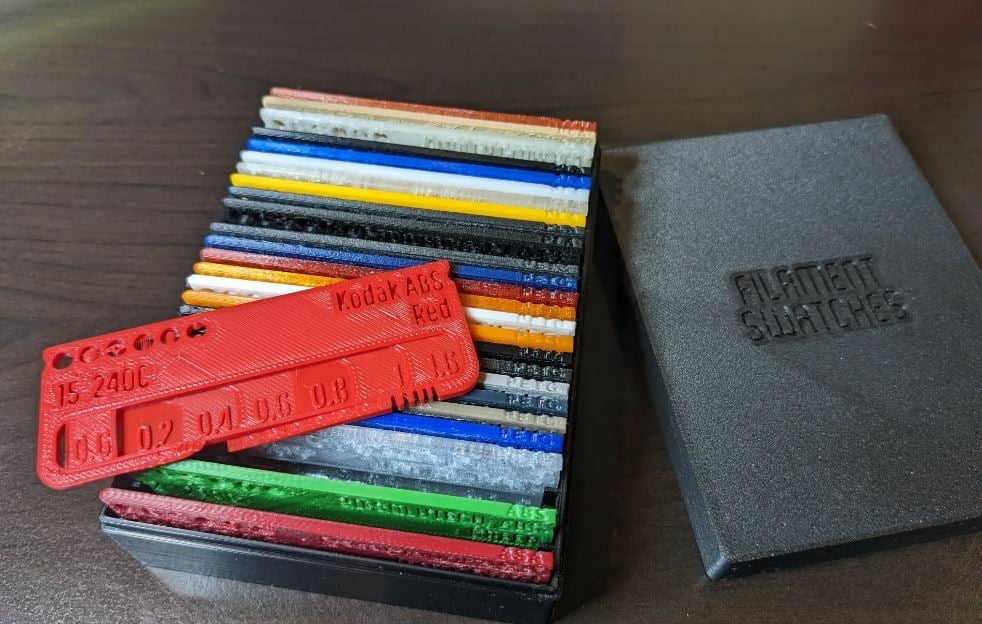
If you have a lot of filament, it can be difficult to remember the exact properties of the material, such as its surface finish (e.g. matte) and tolerances. This 3D printable swatch is a sample print that you can make with all of your stored filaments. Then, you can save them to remember how each material’s color looks and to see the printing performance of each.
In addition to the swatch model, this project also includes a swatch box that makes it easy to organize and store all your filament swatches. The designer has also added a handful of other designs to the project page, including a peg board swatch holder and a customizable storage box, so you have plenty of options for keeping your swatches organized.
As for printing, the designer listed that they made the swatches with a 0.2-mm layer height but didn’t provide any other tips.
Sealed Containers
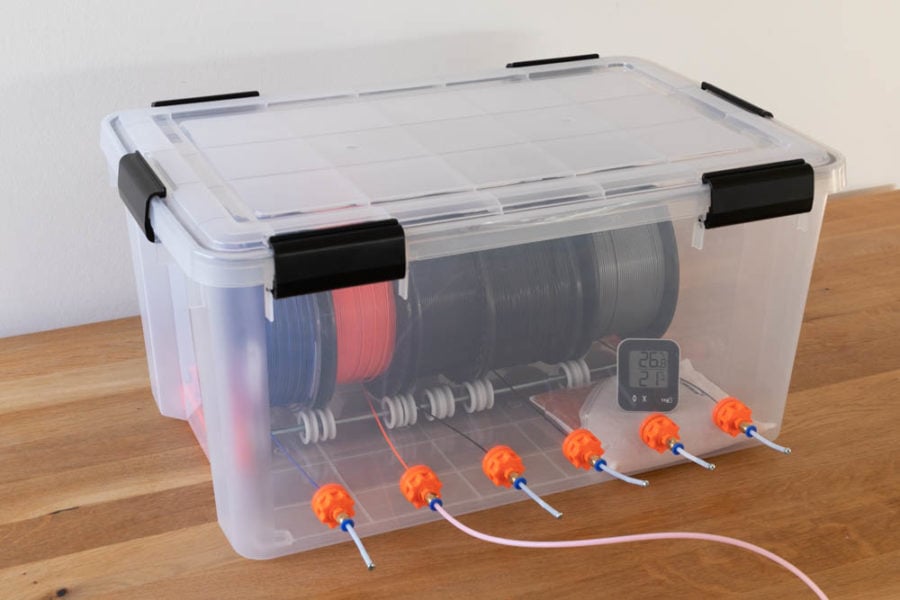
Instead of drying out your filament, it might be a good idea to just never let it get wet in the first place. This is where proper filament storage comes in. One of the best and easiest ways to store your filament is in an airtight container that prevents any moisture from getting in.
For the DIYers, the box from Anybot is great and can hold up to six spools. It can also be customized to act as both a storage container and a filament feeder.
Of course, if you’re often opening your airtight containers, you might want to invest in some desiccant pouches, which naturally absorb moisture from the air.
For purchase, there’s a special airtight filament container from PrintDry, which has a built-in pump to remove the air. There’s also an airtight food container that perfectly fits a 1-kg spool of filament.
Cutter

When you insert filament into your printer’s extruder and hot end, it’s important that the strand has a sharp ending, or else it might not pierce through the hot end correctly. The best way to ensure you have a sharp point is by using a filament cutter, such as this 3D printable handheld option. While you could alternatively use a pair of pliers or scissors, these tools aren’t usually intended for cutting sharp angles.
This simple yet effective filament cutter was designed to cut filament at a perfect 45-degree angle to ensure the end is sharp enough to be loaded into the extruder. All you have to do is slide your filament strand through the indented slot and squeeze the handle.
This filament cutter is available in two different versions, including the original M2.5 version and the M3 version with and without nuts. For the original, you’ll need the 3D printed part, a box cutter blade, and two M2.5 washers, nuts, and screws. Assembly should be a breeze, and you can find easy-to-follow instructions on the project page. As for printing, the creator of this tool listed that they used a 0.2-mm layer height and 20% infill with supports activated.
Cleaning Clips
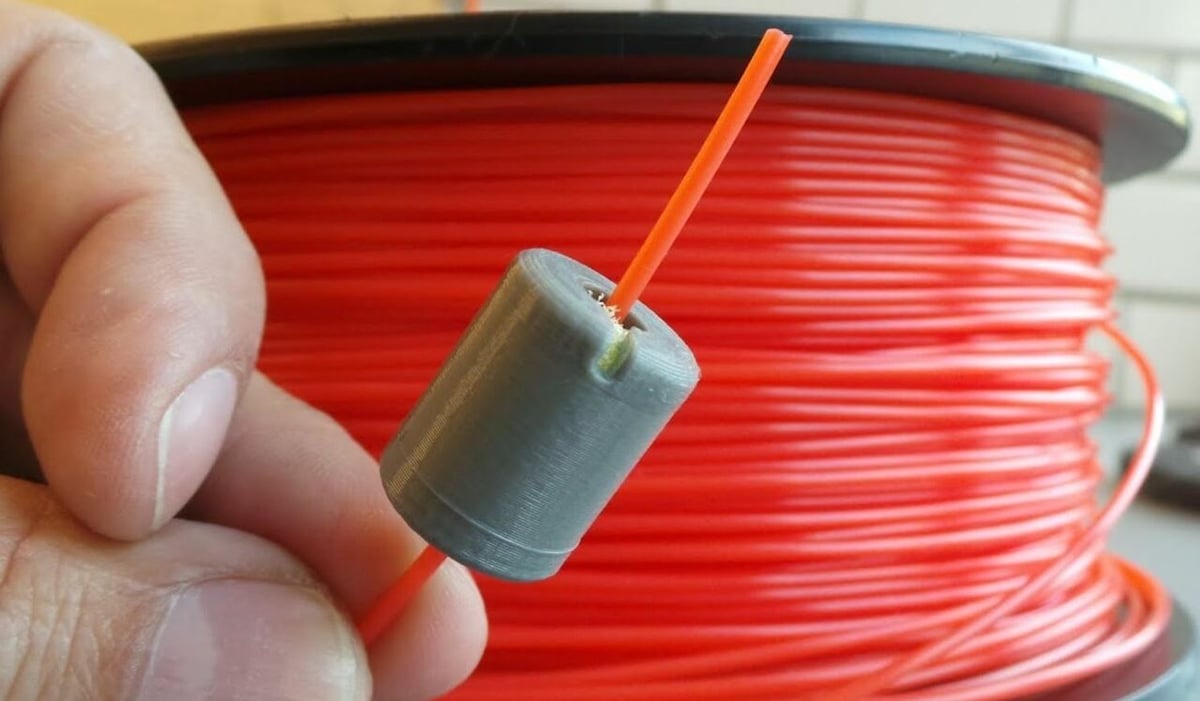
We all know that dust is bad for 3D printers. Well, your spools of filament will also collect dust if you leave them out in the open. And if it’s on the filament, it’ll collect in your nozzle and eventually cause a problem.
Even with proper storage, it’s never a bad idea to spend a dollar or two and get a cleaning clip. These simple tools are filled with a brush or foam that will remove dust from the filament before the filament flows into the extruder.
For very little cost, filament cleaning clips can save you a lot of time and headaches. There are also, of course, 3D printed filament clips that you can print and assemble. Take your pick!
Reusable Spools

Reusable filament spools are generally 3D printable and easy to use. You simply split the spool, put on the coil, then reconnect the two pieces with the filament in between.
In addition, more and more manufacturers these days are offering reusable spools or refill options. These spools are a great way to save money and help protect the environment by not purchasing and throwing away additional spools.
You can find reusable filament spools from manufacturers like Bambu Lab, Sunlu, and Prusament.
Storage Clips
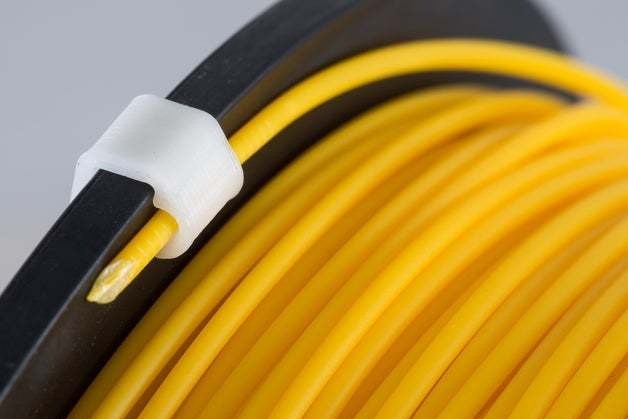
When you’re putting away a spool of filament, there’s nothing more irritating than wasting precious inches of filament in order to push it through a hole in the spool.
For that reason, it’s certainly worth the effort to print a few of these simple filament clips. They’ll easily hold the end of your filament in place, regardless of where it sits. You can also buy filament clips, but just make sure that you’re getting the right size for the filament you’re using.
No matter how you get your hands on them, filament clips are a simple yet elegant accessory to keep your filament storage neat and tidy.
Digital Caliper
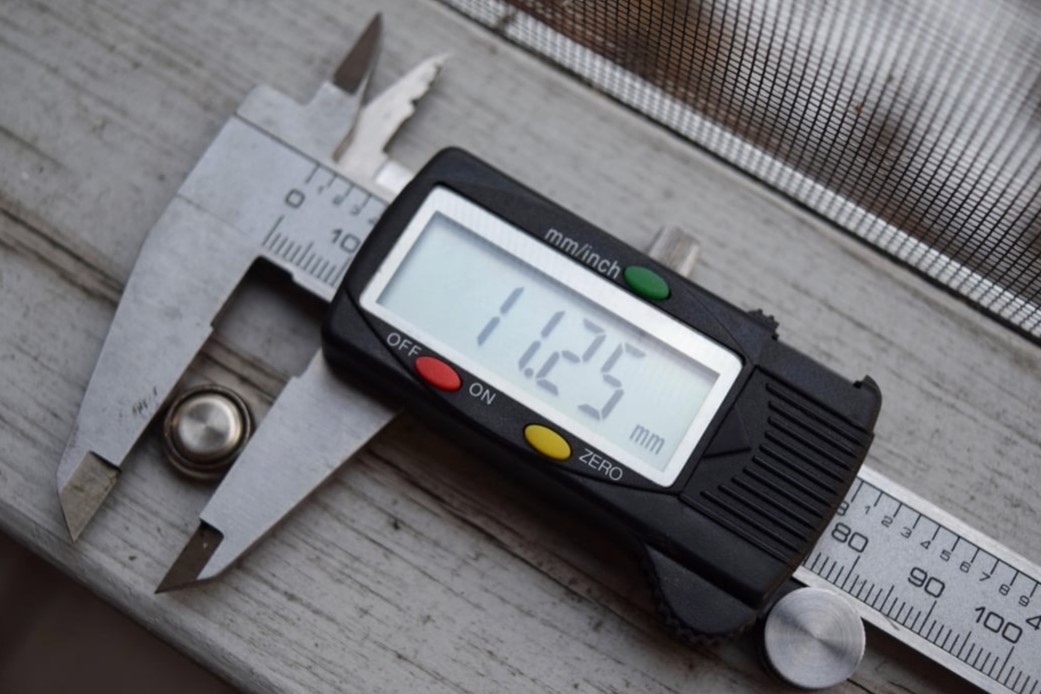
A digital caliper is one of the most popular tools among hobbyists, engineers, and DIY enthusiasts for taking all sorts of precise measurements. You can even use a digital caliper to gauge the consistency of the diameter of your filament, which is helpful for determining filament quality. Moreover, higher-quality filaments will have a more consistent diameter (e.g. closer to 1.75 mm) and will provide more accurate extrusion, leading to higher-quality 3D prints.
Of course, you can use any measuring tool, such as an analog caliper, to measure your filament’s diameter. However, digital calipers are perhaps best for this purpose because of the high precision they offer. After all, it’s not easy to see a 0.01-mm change in the diameter with the naked eye.
Plus, digital calipers have become very affordable in the past decade, and you can find many viable digital calipers at Amazon for under $50. You can also check out our guide to the best digital calipers for more options.
Filament Guide

A Bowden tube, also known as a PTFE tube, is responsible for keeping your filament safe while it moves from the extruder to the hot end. But, on almost any 3D printer, there’s nothing to make sure your filament is safe going from the spool to the extruder. Moreover, if your filament is twisted or kinked, it could bend around the frame of your printer and cause issues like under-extrusion or even cause a complete print failure if the strand snaps.
A filament guide is a part that attaches to the frame of your 3D printer and makes sure that your filament is traveling from the spool to the extruder safely so it doesn’t catch on any obstacles. Filament guides come in a few different variations, but they’re usually 3D printable and are mounted near the top of your printer’s frame or by the extruder, as these locations are most effective.
Rack
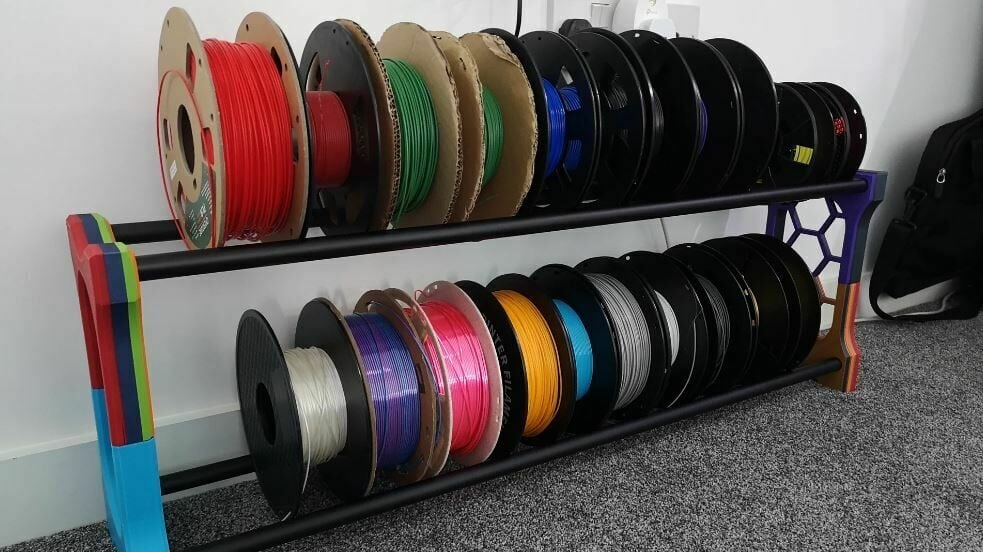
Another terrific accessory for those of you with a large collection of 3D printing filaments is a spool rack. There are many different spool rack projects online, but this customizable rack is a great option to check out.
The filament rack uses a four-piece 3D printed frame with a visually appealing hexagonal pattern, and it’s meant to hold 15-mm aluminum tubes for the filament to sit on. As seen in the image above, the rack offers two levels of storage, and you can change the length of the tubes depending on the amount of filament you have.
Printing the frame pieces for this filament rack should be fairly simple, as the design contains minimal details. Moreover, the designer listed that they printed the pieces with a 0.25-mm layer height in PLA filament.
Welder
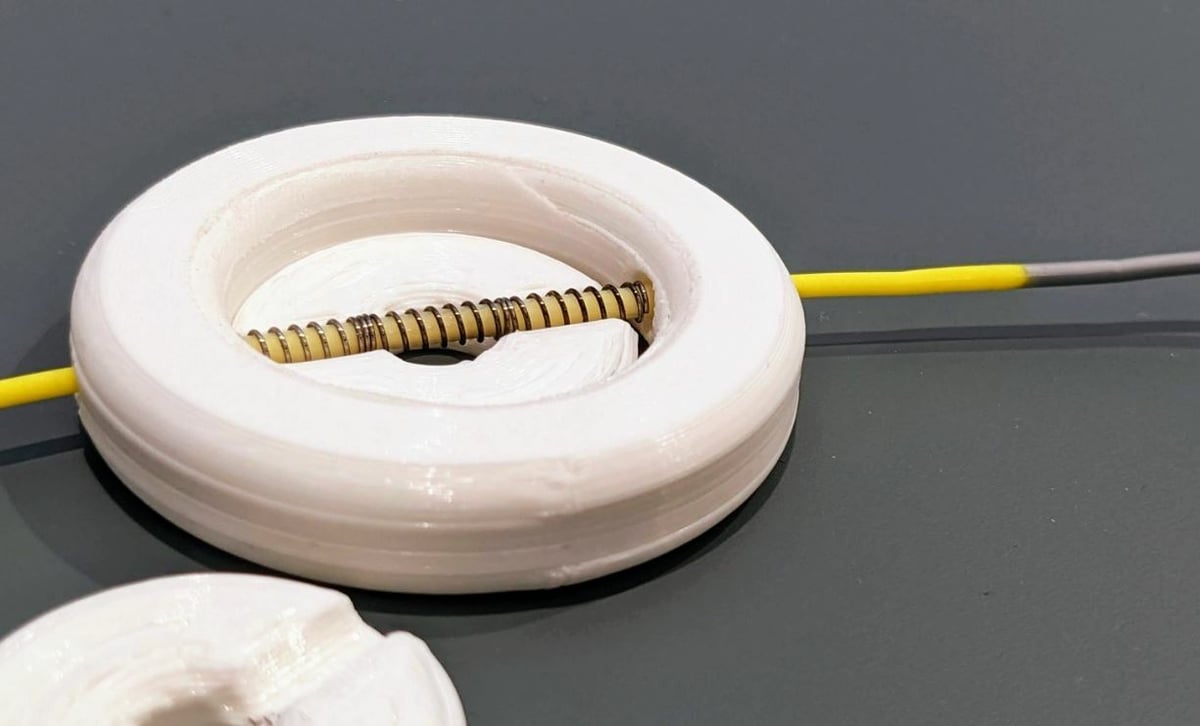
Has your filament ever snapped in half before? Or do you want to make multicolor 3D prints? This filament welder is your new best friend!
This 3D printable gadget isn’t an actual welder, and it has no electronic parts. Instead, it’s a makeshift tool where two strands of filament can be joined with heat from a flame. This filament welder is made up of three 3D printed parts, a bit of PTFE tubing, and a small spring, which you can take out of a pen.
Using the jig is very simple, and you can check out the designer’s tutorial video for a visual demonstration. Start by inserting the strands into the opposing sides of the jig, push them until they line up in the middle of the spring, then take a lighter and heat up the spring until the filaments are melted and fused.
Printing the three small parts of this filament welder should also be very easy, as the designer has shared some of their successful print settings. These include a 0.15-mm layer height, a 50% infill density, and no supports or a raft.
Steel Nozzles
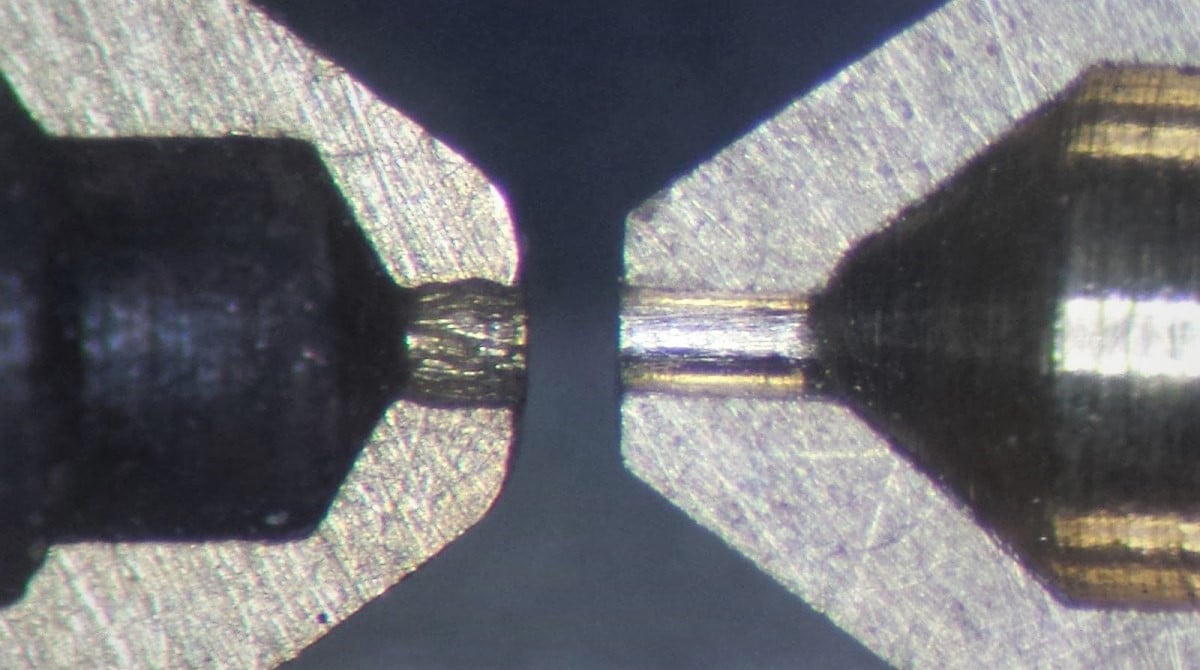
Most accessories give your printer the ability to do something it couldn’t before. Steel nozzles provide you with that extra power to print with abrasive materials, such as carbon fiber composites, metal, and even glow-in-the-dark filaments. (An alternative option to hardened steel nozzles are ruby nozzles, which last longer but are more expensive.)
Without a steel nozzle, any abrasive filament will eat through your standard brass nozzle with just a few hours of printing. Brass is simply too soft a material to handle tough filament.
Thankfully, there are plenty of great steel nozzles out there. And once you have one, check out some abrasive filaments to test out your new steel nozzle.
Improved Cooling Shrouds
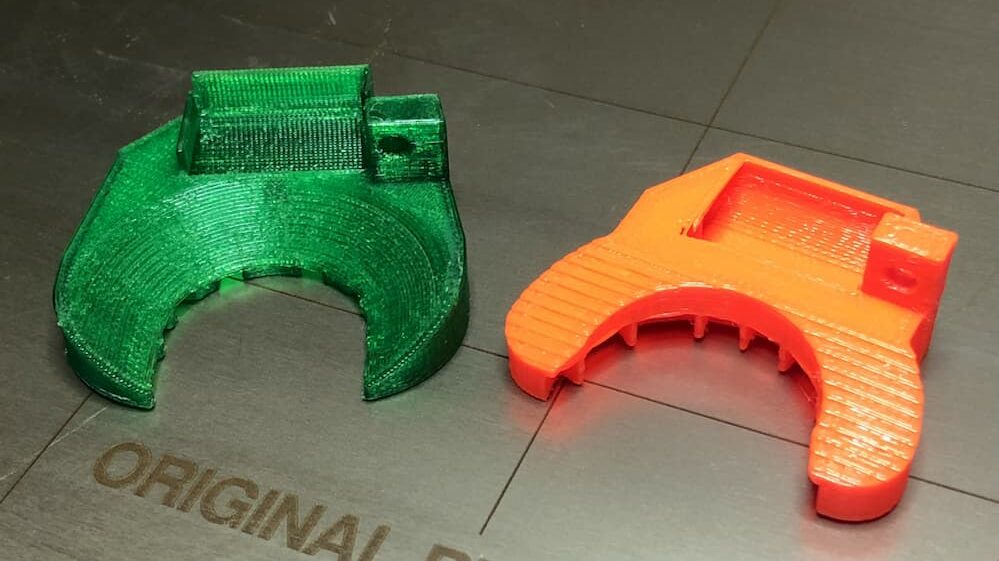
If a printer’s going to print overhangs or supported parts, proper cooling is essential. Most stock printers have shrouds that only blow from one or two directions, which is often adequate. This is especially true when you’re dealing with complex models. The ideal scenario is to have the filament bed cooled immediately after leaving the nozzle, regardless of which direction the head is moving.
These nozzle shrouds are generally a DIY project for your specific printer and extruder design. A search for cooling shrouds from Thingiverse, for example, or a little work in CAD can give you what you need.
One of the most successful models is this semicircular design, which gives wide airflow coverage and is simple to print. No matter which one you choose, make sure the design has at least two outlets blowing on opposite sides of the part.
Spool Holders
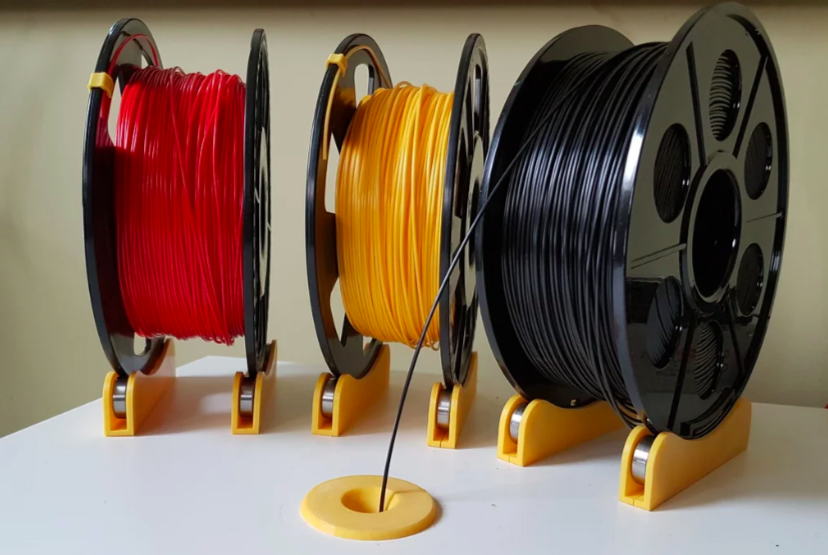
Most machines have a spool holder built in or attached, allowing filament to unwind easily without tangling. Ideally, a holder should also be able to accommodate different types of spools.
New spool holders, either that you buy or print yourself, often require some hands-on adjustment. Some will be optimized for your machine and might be as simple as a 3D printed hook. Others will need a trip to the hardware store and some assembly.
Runout Sensors
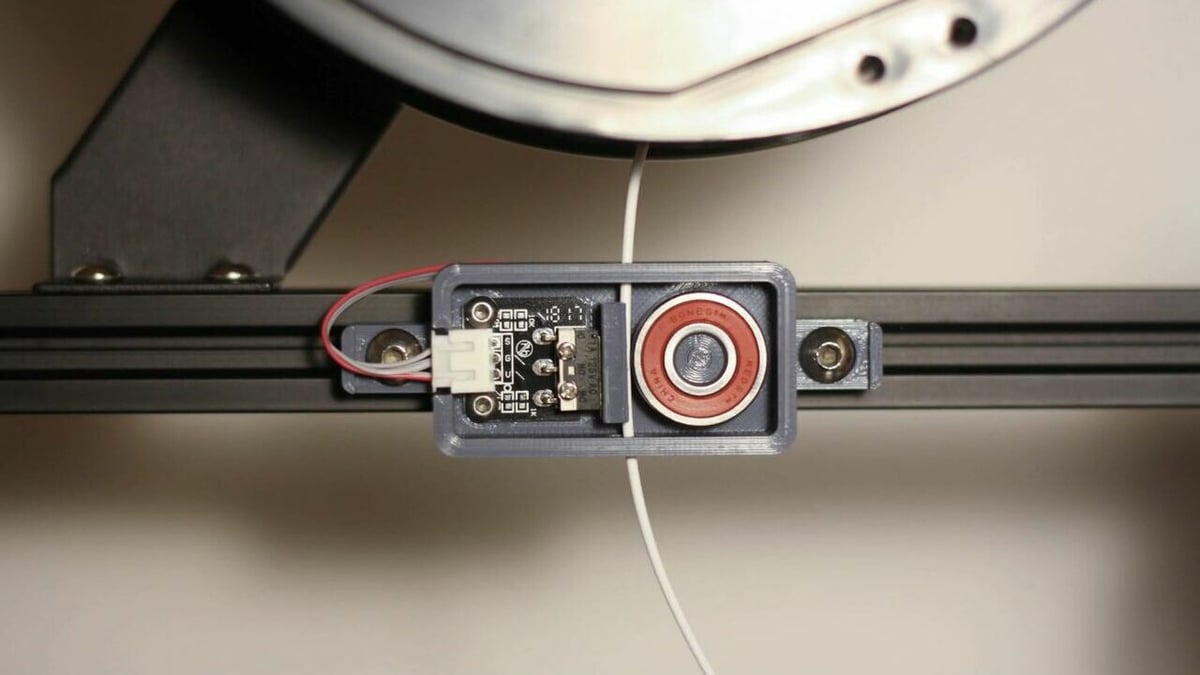
For this last one, you’ll have to know your printer firmware, but it’s totally worth it.
A filament runout sensor detects when your spool is empty and will pause your print until you refill it. It can stop a multi-day print from going bad because you forgot to refresh the spool in the middle of the night!
The best part is that they only cost a few dollars, so they’ll pay for themselves after just one use by saving half a spool of filament that would’ve ended up a failed print.
Many printers, particularly kits, don’t have runout sensors. Adding them requires just a few steps:
- Familiarize yourself with your printer’s firmware and edit it so that it recognizes input from your sensor.
- Purchase a sensor that’s compatible with your 3D printer or build a runout sensor from scratch.
- Mount your sensor where your filament can run through it easily.
And that’s it!
Bonus: Enclosures
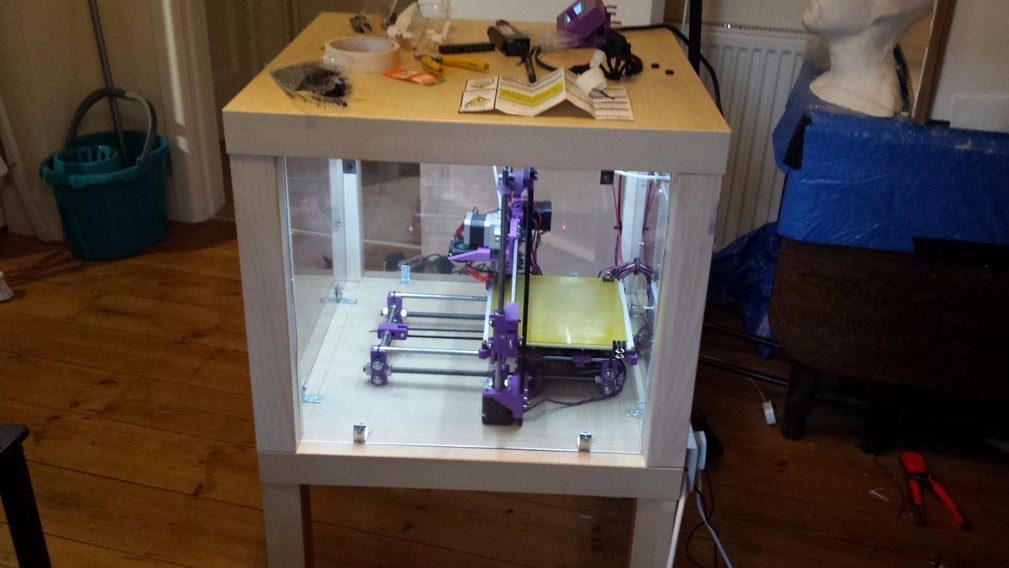
While not a filament accessory per se, 3D printer enclosures are designed to more precisely control the air temperature around the printer. They can eliminate cool drafts, which often cause warping and other print failures. A bonus of using an enclosure is it can come with filters to decrease particle emissions in the printing room.
Enclosures are generally made from transparent acrylic, which contains the heat well and gives you a clear view of the printer. Good examples include the enclosures made by 3DUpFitters, as well as Creality’s simpler fabric enclosure for their machines.
If you want to go the DIY route, there’s no shortage of ideas out there, from simple cardboard boxes to seemingly purpose-made stands made from Ikea furniture!
License: The text of "Top 15: Must-Have 3D Printing Filament Accessories" by All3DP is licensed under a Creative Commons Attribution 4.0 International License.








